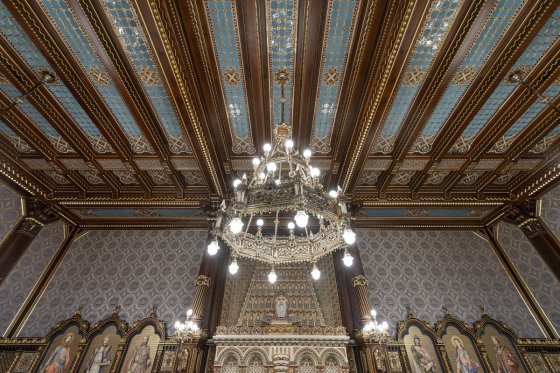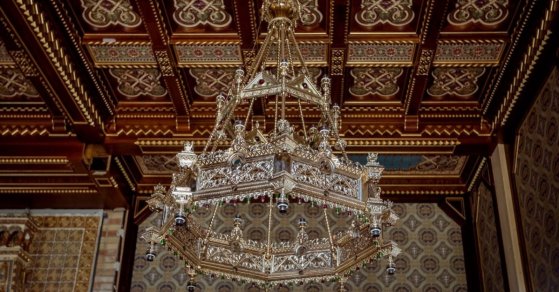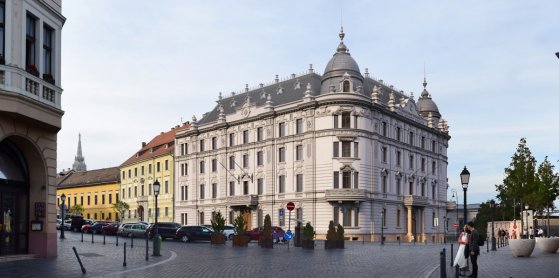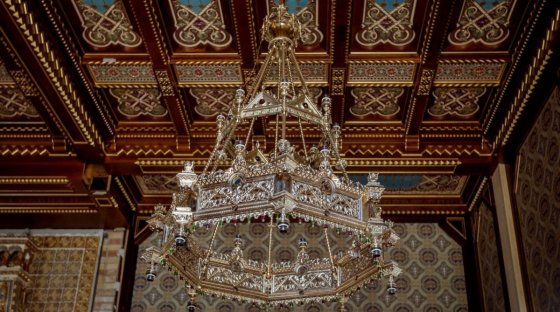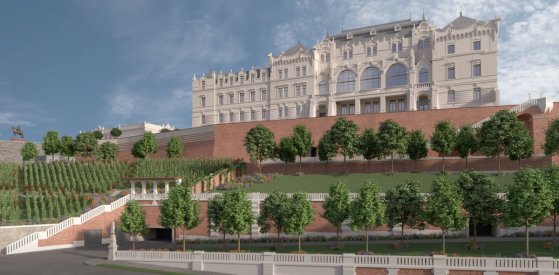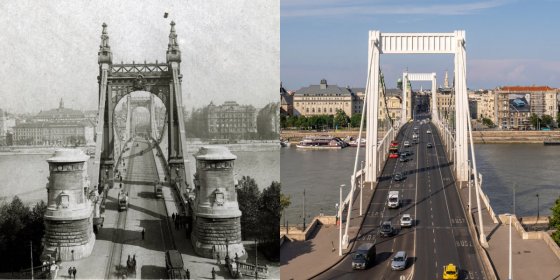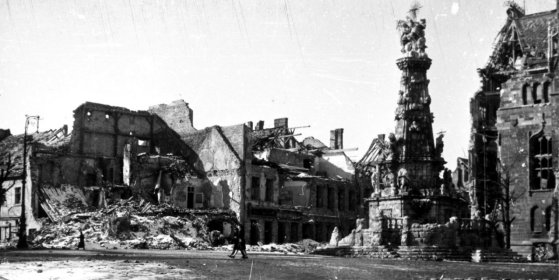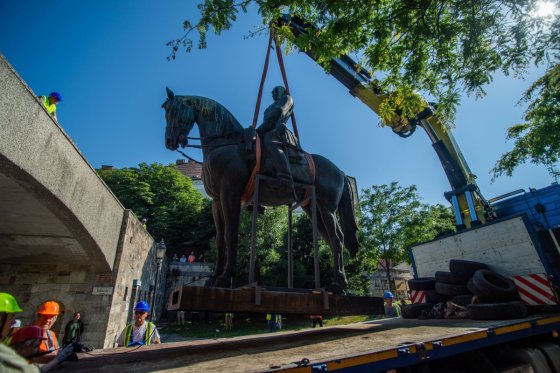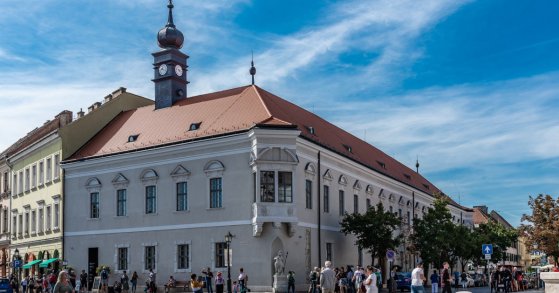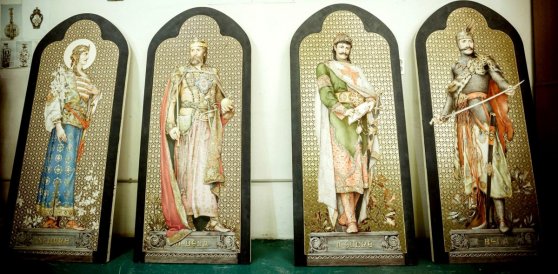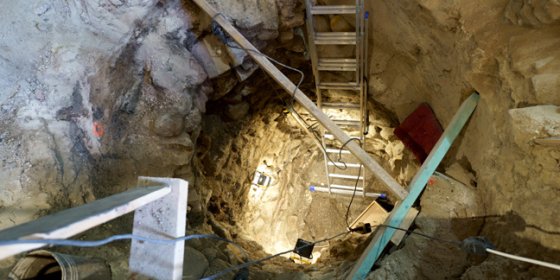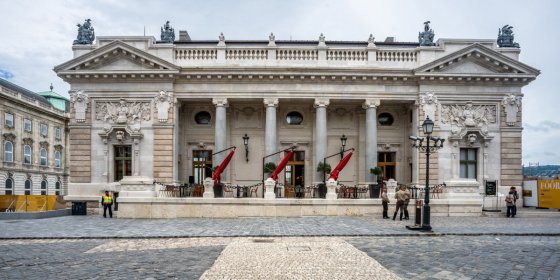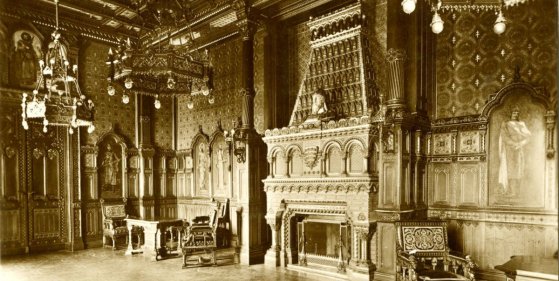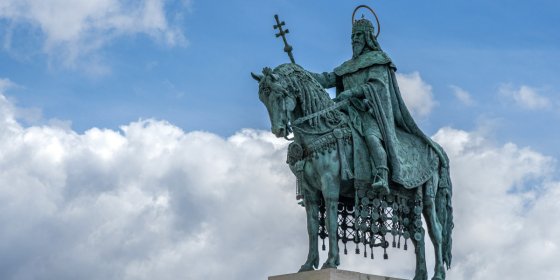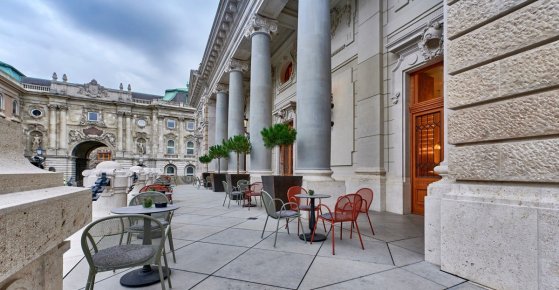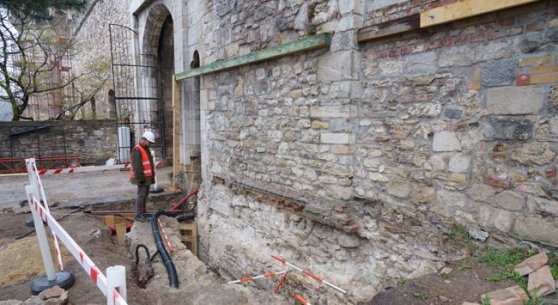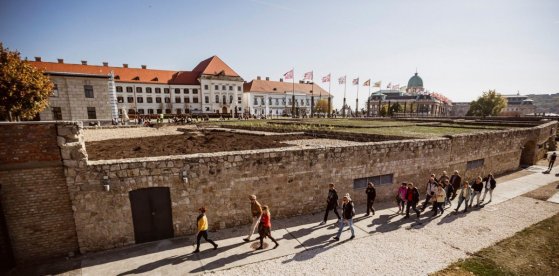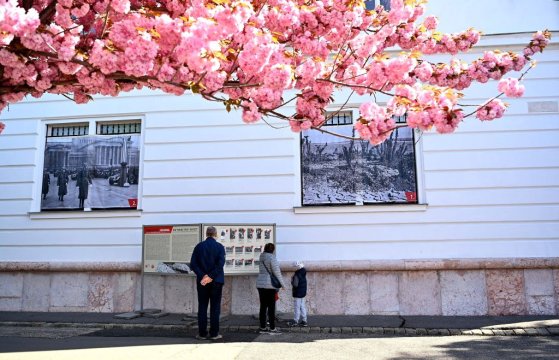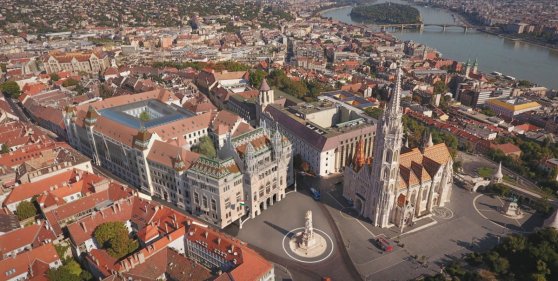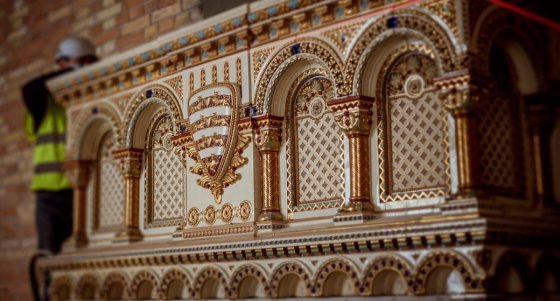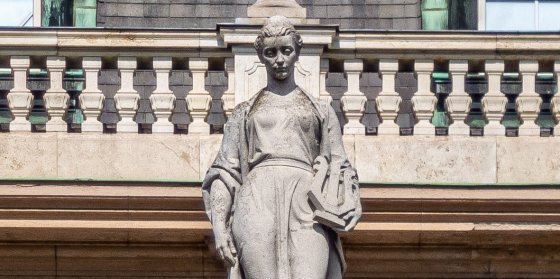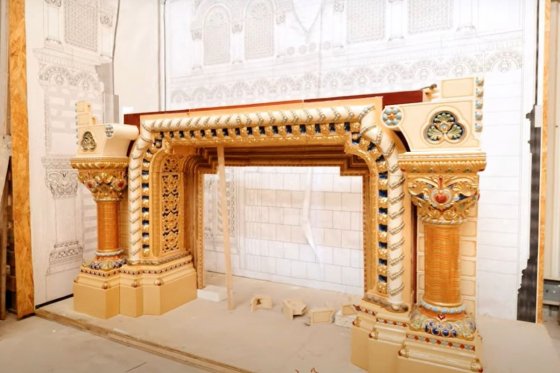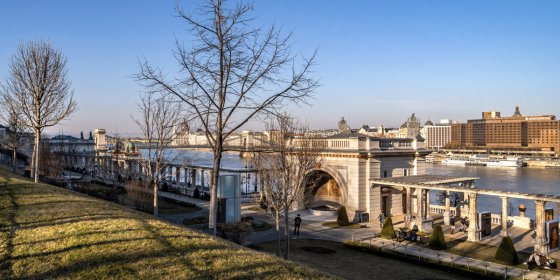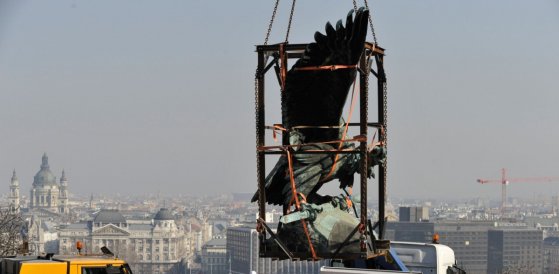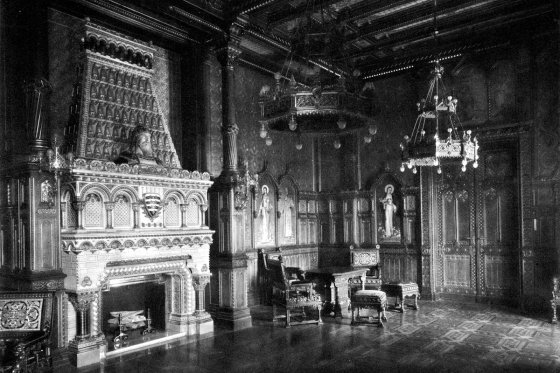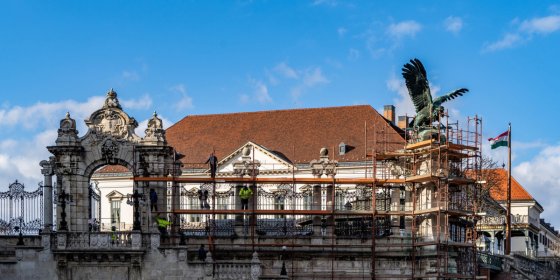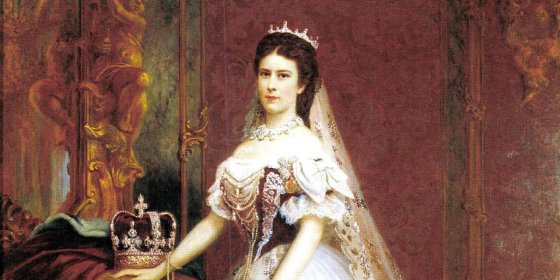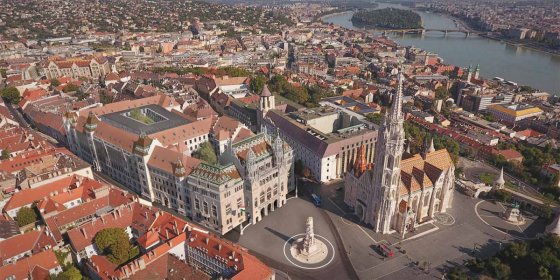 The „intertwined history” of the bridges and the city of Budapest
Which ideas and events have shaped the fate of bridges of Budapest and the cityscape? Alongside many other interesting facts, this question is also answered this newly published book by the Budapest City Archives, which introduces the history of bridges in Budapest.
The „intertwined history” of the bridges and the city of Budapest
Which ideas and events have shaped the fate of bridges of Budapest and the cityscape? Alongside many other interesting facts, this question is also answered this newly published book by the Budapest City Archives, which introduces the history of bridges in Budapest.
Buda Castle
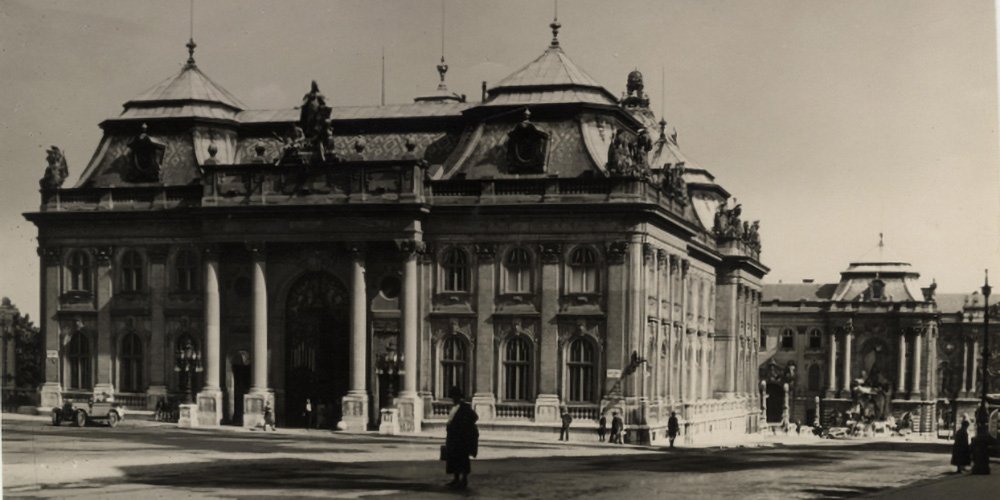 Budapest then and now – 6 photos showing how much the cityscape has changed over a century
Budapest then and now – 6 photos showing how much the cityscape has changed over a century
August 31, 2021 at 9:00 AM
The change in Budapest can be surprising when looking at old pictures: the former riding hall behind the National Museum, the New Building (Újépület) on the site of the current Szabadság Square, the disappeared houses of Pest and Buda downtown, the former splendour of the Buda Palace, and the beautiful historic buildings which stood on the site of the series of hotels along the Danube. What has changed and what is constant? Take a look at the six pictures Pestbuda collected.
The reborn St. Stephen's Hall of the Buda Castle was solemnly handed over
August 18, 2021 at 1:30 PM
The St. Stephen's Hall of the Buda Palace, which was once one of the most ornate rooms in the palace, was renovated with complete historical fidelity. The room, rebuilt in its original form, will be open to the public free of charge from 20 August until the end of the month, following today's official handover.
The world-famous chandeliers of the Kissling Factory - The former ornate luminaires were re-created for St. Stephen's Hall
August 12, 2021 at 11:00 AM
Among the outstanding applied arts companies of the age of dualism, Rudolf Kissling and his son played a significant role with their chandelier and bronze cast factory. Thanks to their artistic work, many of the public buildings built in this era were decorated with their chandeliers and other bronze objects. The original chandeliers of the St. Stephen's Hall in Buda Castle were also made by the Kissling Factory, and the works of applied art were re-created after a long research work.
For the first time, we can see in photos what the reborn St. Stephen's Hall looks like
August 6, 2021 at 12:00 PM
For the first time, we can see in photos what the new St. Stephen's Hall in the Buda Castle looks like, which will be opened to the public on 20 August, in two weeks. In the newly taken photographs, we can see several details of the historic ceremonial hall, including the new Zsolnay fireplace, new floor and wall coverings, new pyrogranite images of kings and Hungarian saints, and even a close-up of an armchair and a curtain upholstery.
Reconstruction of the former Red Cross headquarters begins in Buda Castle
August 4, 2021 at 10:00 AM
During the reconstruction of the building, which was built for the Red Cross Society and then housed the Ministry of Foreign Affairs and was demolished after the Second World War, it will faithfully follow the original corner dome in its outer features. However, the interior of the building will house modern technology. The partial renovation of the neighbouring Batthyány Palace is also being carried out.
The final touches are being made in the St. Stephen's Hall of the Buda Palace
July 27, 2021 at 2:30 PM
As a result of the years of work of many experts, from 20 August we can admire the St. Stephen's Hall in the Buda Palace in its old light. The years of work are now coming to an end, almost all the former decorative elements have been put in place. Once again, the bust of St. Stephen stands on the world-famous Zsolnay fireplace, the pyrogranite images depicting the kings and saints of the Árpád dynasty have also been placed, and the huge chandeliers and special wall sconces have also been installed. After the opening on 20 August, it will be free to access the St. Stephen's Hall for a few days.
Reconstruction of the Palace of Archduke Joseph begins
July 19, 2021 at 6:00 PM
Reconstruction of the Palace of Archduke Joseph on Szent György Square, Buda Castle begins. The building, which was blown up in 1968 and its former Neo-Renaissance barn and palace garden, is also being reconstructed.
Budapest then and today – 5 photos showing how much the city has changed over a century
June 24, 2021 at 9:00 AM
Comparing past and present is always exciting. Walking around the city, one can often wonder what this or that street used to look like, what houses stood, and which were built later. If someone looks at an archive picture, the old buildings that still stand today, such as the Parliament or the St. Stephen's Basilica, help them find their way. At the same time, they can admire the once small-town atmosphere of Csalogány Street, the almost unrecognisable Deák Square or the old Erzsébet Bridge that many still consider to be one of the most beautiful bridges built in Hungary.
Ideology fuelled destruction in Buda Castle after World War II
June 19, 2021 at 8:30 AM
The siege of Budapest was one of the most brutal battles of World War II, with the Castle District suffering the greatest damage. Only 1,400 of the approximately 6,500 flats standing in the vicinity of Castle Hill remained intact. And the devastation continued after the war: the communist dictatorship destroyed many buildings for ideological reasons, even though they could have been saved or rebuilt. Many iconic buildings, including several churches and the Castle Garden, fell victim to communist "restoration".
The Fehérvár Roundel is being rebuilt
June 17, 2021 at 3:00 PM
The reconstruction of the Fehérvár Roundel in Buda Castle and the renovation of the surrounding castle walls has started. During the works, the equestrian statue of General Artúr Görgei was transported to be restored. It will be returned to the walls in its former glory.
The bricklayer building the Town Hall of Buda appears on the Holy Trinity Column
June 15, 2021 at 9:30 AM
Most of the encyclopaedias only describe the life of builder János Hölbling from Buda briefly, although, after the siege of 1686, he took an active part in the reconstruction of the city and the construction of the former Buda Town Hall is also connected to his name. He was such a respected professional in his day that his figure even appears on the Holy Trinity Column in Holy Trinity Square (Szentháromság). The builder of Buda died 285 years ago.
Painter of saints and kings – Twelve works by Ignác Roskovics adorned Saint Stephen's Hall
June 14, 2021 at 9:00 AM
Ignác Roskovics was one of the popular painters of the last decades of the 19th century and the turn of the century. Among the ecclesiastical and historical works that define his oeuvre, the twelve paintings made for the St. Stephen's Hall in Buda Castle stand out, based on which ceramic paintings were made in the Zsolnay factory. The works, ten of which depict the most important kings and saints of the House of Árpád, and two depict scenes from the life of St. Stephen, will be on display again from 20 August in the recreated St. Stephen's Hall.
Intact utensils found in a medieval well excavated under the National Guard Headquarters
June 12, 2021 at 3:30 PM
The everyday life of the former inhabitants of Buda Castle can be studied through the objects, especially the ceramic jugs and glasses, which were found during archaeological research in the area of Dísz Square – Szent György Square, on the basement level of the Honvéd ('national guard') Headquarters. Most of the finds were hidden in the depths of an identified well.
Guardians of Buda Castle – traditions of the Hungarian Royal Guards come to life in the café of the Guard House
June 10, 2021 at 10:00 AM
After almost fifty years, the Guard House (Főőrség) once again stands in full beauty on the western side of the Hunyadi courtyard. The recently opened café revives the traditions of the Hungarian Royal Guards. The exhibition on the first floor presents the history of the military unit of Hungary with the help of original uniforms, weapons, and copies of contemporary documents. The café's menu evokes the heyday of the Budapest café culture. Its interior refers to the colours of the guard's uniforms, which was one of the top Hungarian national uniforms. Pestbuda asked managing director István Bottyán about the past and present of the renewed Guard House.
"The most lavish fireplace ever made in Hungary"
June 5, 2021 at 10:30 AM
Hardly anyone would doubt that the country’s most famous fireplace stood in the St. Stephen’s Hall of the Royal Palace. Vilmos Zsolnay lived to see the making of the sophisticatedly designed and executed masterpiece made of Zsolnay majolica, but he could no longer supervise its installation: he died not long before. Lucky posterity, however, may soon admire the work destroyed after World War II, as the former masterpieces were rebuilt under the National Hauszmann Program in the reborn St. Stephen's Hall. In this article, Pestbuda looks at the behind-the-scenes of the redesigning of the fireplace.
The first statue of Saint Stephen in Budapest was completed in 1906
May 25, 2021 at 10:00 AM
The statue of Saint Stephen has been standing in Buda Castle next to the Fisherman's Bastion for 115 years. Although the founding king of Hungary has always been highly respected in the country, the great work of Alajos Strobl was completed slowly. The first statue of King Stephen in Budapest was inaugurated in 1906 next to Matthias Church almost 40 years after it was first planned.
Café open in Guard House in Royal Palace of Buda Castle
May 14, 2021 at 3:30 PM
The Guard House (Főőrség) building opened on Friday. Visitors are invited to the cafe and an exhibition of the 260-year history of the Hungarian Royal Guards. The building designed by Alajos Hauszmann and built in 1903 originally served as the headquarters of the Palace and Royal Guards.
Artefacts found at 14th century castle wall
May 3, 2021 at 2:00 PM
The finds from the Anjou or Sigismund-era constructions were found near the castle walls of the Royal Palace of Buda Castle, in the New World Garden. Staff from the Budapest History Museum completed the excavations. The finds are of particular importance because little is known about the Anjou-era parts of the palace.
Royal Palace of Buda Castle reopens with new guided walk and Hauszmann exhibition
May 1, 2021 at 2:00 PM
Cultural life has returned to the Royal Palace. A new, free exhibition entitled The Hauszmann Story presents the rebirth of the Buda Castle District. Visitors are also invited on a spectacular, underground adventure walk as part of the Buda Castle Walks.
Outdoor exhibition at the Military History Museum
April 23, 2021 at 4:30 PM
War correspondent units were established in the Hungarian Royal Army in 1941 to document the war. The Military History Institute and Museum has organised an exhibition of their photographs.
Visible work on exterior of Ministry of Finance building begins
April 14, 2021 at 7:30 PM
The monumental reconstruction of the facade and roof structure of the Ministry of Finance on Szentháromság Square and the restoration of the representative interiors is to begin soon. The building, which will be completed by 2023, will follow the designs Sándor Fellner created.
Zsolnay fireplace in Saint Stephen's Hall now being built
April 14, 2021 at 12:30 PM
The largest Zsolnay fireplace in the country, weighing nearly one and a half tons, is now being built in the Saint Stephen's Hall of the Royal Palace of Buda Castle. Hungarian artisans, including representatives of disappearing crafts, took part in the re-creation of the 611-piece ceramic fireplace. The historical hall will be open to the public on August 20.
65 years of National Poetry Day – Sculptures in Budapest pay tribute to poetry
April 11, 2021 at 12:00 PM
For the second year in a row, the country is celebrating National Poetry Day behind closed doors. After last year's tour of statues, when Pestbuda visited the monuments of famous poets, we now showcase several works depicting poetry itself on Budapest's famous buildings.
Zsolnay fireplace of Szent Stephen's Hall to be installed soon
April 1, 2021 at 2:00 PM
One of the most beautiful ornaments of the first reconstructed historical hall of Buda Castle will be the more than 2.5 meters wide and 4.5 meters high ceramic fireplace, made by the Zsolnay Porcelain Manufactory in Pécs. Experts worked on the reconstruction of a masterpiece for five years. The fireplace is made up of 611 pieces, for which nearly a kilogram of 24-carat gold was used. The reborn Saint Stephen's Hall will be opened to the public on 20 August.
From Triton's Well to Ifipark - The stories of the Castle Garden Bazaar
March 12, 2021 at 10:00 AM
The Neo-Renaissance garden of the Castle Garden Bazaar was built between 1874 and 1882. It is a worthy pair to any palace garden in the world and houses many details that have exciting stories to tell beyond their beauty: the Triton Fountain, the garden's budding roses, and the medieval curtain wall could each tell hundreds of stories if not sentenced to silence. So let us tell their stories for them.
Restoration of Turul statue begins in Buda Castle
February 26, 2021 at 6:00 PM
The turul statue of Buda Castle has been lifted from its pedestal and moved to a temporary restoration workshop created on Savoyai Terrace. The statue will be cleaned, its bronze work repaired, and the internal iron frame reinforced.
Six months to go – Saint Stephen's Hall ever closer to (re)completion
February 20, 2021 at 9:30 AM
On 20 August, the first reconstructed ornate hall of the Royal Palace of Buda Castle will open to the public. Saint Stephen's Hall has the most lavish representative space of the turn of the century, housing several unique artistic and applied artistic solutions. The structure of the rebuilt Southern Connecting Wing of the Royal Palace is now complete, internal work will begin in the coming days.
Restoration of Habsburg Gate and Turul statue in Buda Castle has begun
February 19, 2021 at 9:00 AM
The ornate gate built during the Hauszmann-reconstruction of Buda castle stands at the Szent György Square station of the Buda Castle Funicular. The ornate fence, stairs, and the adjoined great Turul statue – erected in 1905 – are being restored.
Refuge for a Queen – Queen Consort Elizabeth's love for Buda Castle
February 13, 2021 at 10:00 AM
The story of how Franz Joseph's beautiful wife went from being unknown in Hungary to become "our Queen consort", often referred to simply as Sisi, is fascinating. The Queen learnt Hungarian, was happier in Buda than Vienna, and her death shook the entire nation. Her friendship with Gyula Andrássy is well-known, and it was in part her efforts that transformed Franz Joseph (Ferenc József), the cruel oppressor, to the diminutive Ferenc Jóska.
New visuals: Take a look at the Ministry of Finance
February 3, 2021 at 2:00 PM
The final designs of the office block to be built in the Fortuna Courtyard of the Ministry of Finance on Szentháromság Square have been revealed. An office block stood in the courtyard until 2019 when it was torn down.
More articles
 The „intertwined history” of the bridges and the city of Budapest
Which ideas and events have shaped the fate of bridges of Budapest and the cityscape? Alongside many other interesting facts, this question is also answered this newly published book by the Budapest City Archives, which introduces the history of bridges in Budapest.
The „intertwined history” of the bridges and the city of Budapest
Which ideas and events have shaped the fate of bridges of Budapest and the cityscape? Alongside many other interesting facts, this question is also answered this newly published book by the Budapest City Archives, which introduces the history of bridges in Budapest.
 The Bridge Report, which brought a turning point in the history of Budapest
A travel report that changed the history of Pest and Buda, as well as Hungary. The little book contributed to the change of half a thousand years of legal customs and the implementation of an investment of unprecedented size and technical quality. This book was The Bridge Report [Hídjelentés in Hungarian].
The Bridge Report, which brought a turning point in the history of Budapest
A travel report that changed the history of Pest and Buda, as well as Hungary. The little book contributed to the change of half a thousand years of legal customs and the implementation of an investment of unprecedented size and technical quality. This book was The Bridge Report [Hídjelentés in Hungarian].
 Drama on the university wall - The heroic monument was planned 95 years ago
In the constant hustle and bustle of the Egyetem Square in Pest, the students may not even notice the monument that decorates the short section of wall between the church and the central building of ELTE. However, it commemorates their predecessors, the heroes who fought for their country in World War I, and those who heroically helped them. The first design of the dramatically collapsing soldier was born in 1928, ninety-five years ago.
Drama on the university wall - The heroic monument was planned 95 years ago
In the constant hustle and bustle of the Egyetem Square in Pest, the students may not even notice the monument that decorates the short section of wall between the church and the central building of ELTE. However, it commemorates their predecessors, the heroes who fought for their country in World War I, and those who heroically helped them. The first design of the dramatically collapsing soldier was born in 1928, ninety-five years ago.

